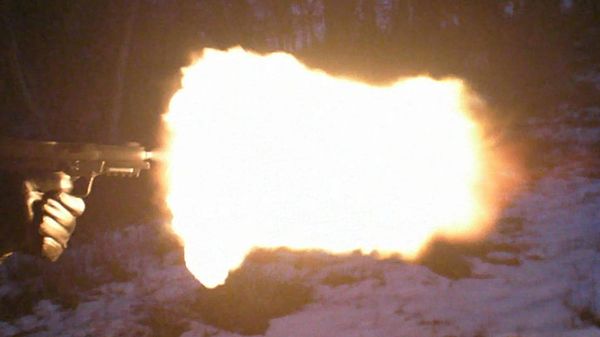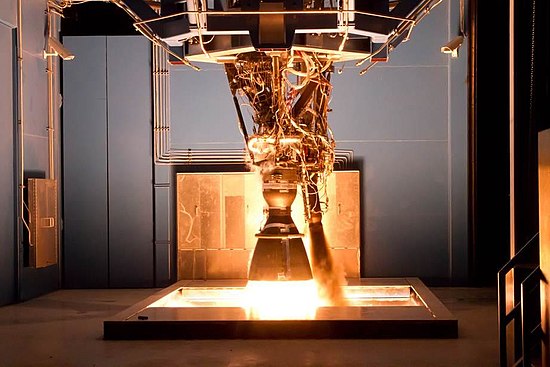It looks like you're using an Ad Blocker.
Please white-list or disable AboveTopSecret.com in your ad-blocking tool.
Thank you.
Some features of ATS will be disabled while you continue to use an ad-blocker.
share:
originally posted by: NicSign
a reply to: neutronflux
I’ve never seen it. If people could see it, there would be like a million sightings on YouTube. The only sighting are from crisis actors
How do you “sight” the ISS on YouTube when it’s a physical craft in orbit around the earth? You mean post videos from individuals that captured the ISS on video as it passed overhead?
Any who. You’ll just move the goal post.
An ISS authentic “sighting” on Youtube.
Capturing the ISS (International Space Station) through my Telescope
m.youtube.com...
I didn’t know seeing a real space station travel across the night sky was a “criss”?
edit on 25-5-2019 by neutronflux because: Added
and fixed
a reply to: neutronflux
Lol that is the standard blurry picture that everyone shows. I mean not everyone would get the exact same capture right?
Lol that is the standard blurry picture that everyone shows. I mean not everyone would get the exact same capture right?
originally posted by: NicSign
a reply to: neutronflux
Lol that is the standard blurry picture that everyone shows. I mean not everyone would get the exact same capture right?
I provided even more proof of the international space station in orbit around earth in space.
What do you not understand that your blatant disregard for reality, your total disregard for honest debate, your inability to provide alternative explanations, and your inability to prove the ISS doesn’t exist has killed your credibility. Your posts are meaningless innuendo.
edit on
26-5-2019 by neutronflux because: Added and fixed.
a reply to: NicSign
And the video I linked to is more than, “Lol that is the standard blurry picture that everyone shows.”
It is a video on how to capture your own pictures of the ISS.
Nice of you to create another out of context argument totally disconnected from reality.
And the video I linked to is more than, “Lol that is the standard blurry picture that everyone shows.”
It is a video on how to capture your own pictures of the ISS.
Nice of you to create another out of context argument totally disconnected from reality.
a reply to: NicSign
Just more proof of rockets working in space.
Just more proof of rockets working in space.
How to See SpaceX's Starlink Satellite 'Train' in the Night Sky
www.space.com...
SpaceX's new array of Starlink communication satellites has even the most jaded of satellite observers agog with excitement as they move across the sky.
On Thursday evening (May 23), SpaceX launched 60 Starlink satellites into orbit on a Falcon 9 rocket from Cape Canaveral Air Force Station in Florida. The satellites are in good health and are the first of a planned 12,000-satellite megaconstellation to provide internet access to people on Earth.
The satellites, which are now orbiting at approximately 273 miles (440 km) above the Earth, are putting on a spectacular show for ground observers as they move across the night sky.
Close encounters? SpaceX satellites spark Dutch UFO frenzy
m.phys.org...
A Dutch website set up to record UFO sightings was flooded early Saturday with reports after a "train of stars" was spotted crossing the Netherlands' skies, sparking fears of an alien invasion.
But what some thought to be a close encounter of the third kind turned out to be a string of some 60 satellites launched by US-based SpaceX hours earlier as part of its "Starlink" constellation.
The row of satellites which are part of a plan by billionaire Elon Musk's firm to provide internet from space, glided across Dutch skies around 1:00 am (2300 GMT).
edit on 26-5-2019 by neutronflux because: Fixed word
originally posted by: NicSign
a reply to: thedigirati
Lol hahaha you can feel it lol.
Can you prove that I do not?
Why would I not feel it?
Please explain!
a reply to: thedigirati
So your saying you feel the wind push equally on your face as the wind pushed on your the back of your head?
So your saying you feel the wind push equally on your face as the wind pushed on your the back of your head?
originally posted by: NicSign
a reply to: thedigirati
So your saying you feel the wind push equally on your face as the wind pushed on your the back of your head?
And what does that have to do with the sustained controlled explosion of a rocket motor creating thrust by creating recoil by pressing up a confined space and pressuring out a restrictive opening.
For your junk science experiments you reference all the time...
Then do your experiment of the ballon in a large enclosed vacuum chamber that statically the volume of the ballon would not add to the atmosphere of the chamber
You could actually use a water rocket that would hold its shape and might not explode? Are you saying if a pressurized plastic water rocket would explode in a vacuum chamber due to differential pressure, the explosion would not hurl plastic shrapnel everywhere?
But in your repeated posts that you have willing used false arguments, you killed your credibility. Nothing you post has any meaning at this time.
a reply to: neutronflux
Your analogy is like firing a gun, yes there is recoil because pressure builds up between the gun and bullet. The pressure pushes the bullet out and in turn pushes the gun. A rocket is like a gun firing a blank. The powder burns and moves out of the barrel only pushing off the air (assuming the gun powder was not encased in anything). The pressure in a bottle builds up and pushes on the plastic pieces. If the bottle was open the pressure would just freely escape into the vacuum through the opening
Your analogy is like firing a gun, yes there is recoil because pressure builds up between the gun and bullet. The pressure pushes the bullet out and in turn pushes the gun. A rocket is like a gun firing a blank. The powder burns and moves out of the barrel only pushing off the air (assuming the gun powder was not encased in anything). The pressure in a bottle builds up and pushes on the plastic pieces. If the bottle was open the pressure would just freely escape into the vacuum through the opening
originally posted by: NicSign
a reply to: neutronflux
Your analogy is like firing a gun, yes there is recoil because pressure builds up between the gun and bullet. The pressure pushes the bullet out and in turn pushes the gun.
If I throw a medicine ball (or a bowling ball, for that matter) while sitting in a wheeled office chair, why would the chair move the opposite direction? Where is the pressure there?
A rocket is like a gun firing a blank. The powder burns and moves out of the barrel only pushing off the air (assuming the gun powder was not encased in anything).
It seems to me that when propellant burns, a lot of pressure is built up bend that propellant in the rocket's combustion chamber. That tremendous pressure behind the propellant then pushes the propellant with a great force out the back of the rocket.
Just like throwing the medicine ball/bowling ball while in a wheeled office chair with a force and then having that result in an opposite force pushing the chair backwards, the force of the pressure throwing the propellant results in an opposite force pushing to rocket.
If you disagree, explain why.
edit on 2019/5/27 by Box of Rain because: (no reason given)
What looks like a light? I mentioned the ISS and the Iridium flash. Neither one of them "could be anything". With a telescope you can see the shape of the ISS, people have done it, you can do it too, from your back yard.
originally posted by: NicSign
a reply to: Arbitrageur
looks like a light. could be anything. People say you can see it at night but you can't. It's vague and not really much evidence because a light in the sky could be anything.
The Iridium flash also doesn't fit "could be anything", they are specific flashes of light coming from specific locations in the sky from specific satellites at specifically predicted times based on the geometry of the angle of the sun to the viewer with sunlight bouncing off the satellite's reflective panels. That's about as far from "could be anything" as I can imagine, and you offered no alternative explanation of what else could possibly do all that. Maybe you haven't thought about it. Maybe you should, or maybe you already know they are satellites and you're just trolling, it's hard to tell.
You don't say if you've looked. I posted a video saying how to see the ISS from your backyard but I see no sign that you even attempted to see it. That comments sounds more like you're trolling than seriously debating.
originally posted by: NicSign
a reply to: neutronflux
I’ve never seen it. If people could see it, there would be like a million sightings on YouTube. The only sighting are from crisis actors
Right! Well I've never seen penguins in the antarctic but that doesn't mean they don't exist. And it's a whole lot easier to see the ISS since you don't have to go anywhere, you can see it from your back yard!
originally posted by: Grimpachi
a reply to: NicSign
Do you have really bad eyesight or have you never looked?
Why do you say "(assuming the gun powder was not encased in anything)"? The gunpowder is encased in the cartridge before ignition with blanks just like it is with real bullets.
originally posted by: NicSign
a reply to: neutronflux
A rocket is like a gun firing a blank. The powder burns and moves out of the barrel only pushing off the air (assuming the gun powder was not encased in anything).
Yes there are some similarities between a rocket engine and firing a blank. In both cases the expanding gases push out in all directions. The expanding gases in a rocket engine push out in all directions in the combustion chamber, and in the blank the expanding gases push out in all directions from inside the cartridge. In both cases, there's only one direction the pressurized gases can escape, so that's where they go at high velocity. Did you know the velocity of the escaping gases of firing a blank are so fast and have so much momentum that they can actually kill someone at close range, even if there is no bullet? That happened to actor Jon-Erik Hexum, he died as a result of the high pressure gases escaping at high velocity from a blank fired at close range, which pushed part of his skull bone into his brain and killed him. You can get the idea why even if there's no bullet you don't want to be too close to these gases exiting the muzzle of a gun:
upload.wikimedia.org...

It even looks brightly lit like the gases coming out of this rocket engine during a test:
upload.wikimedia.org... jpg

The main difference with a rocket is that the explosion is not a single shock wave like firing a blank, it's a continuous barely controlled explosion where the gases are constantly propelled out of the engine.
a reply to: Box of Rain
When there is an opening to space, the gas moves only in one direction. When there is resistance like an atmosphere, there is back pressure causing has to move back and push the rocket
When there is an opening to space, the gas moves only in one direction. When there is resistance like an atmosphere, there is back pressure causing has to move back and push the rocket
a reply to: NicSign
Not if the reaction is creating pressure faster than the opening can vent.
False argument for a rocket motor. The sustain reaction that is essentially a controlled explosion in the confined space of the combustion chamber with the pressure generated kept from freely flowing out of the engine by engineered restrictions is different. The reactions in the rocket motor build pressure, and the expanding gasses have to force their way out past the engineered restrictions.
You
False statement. The rapid increase in pressure from the reaction taking place in the rocket motor presses against the chambers of the engine and is literally pressed or forced out the engine. The equal and opposite reaction is the rapidly expanding gas pushing off the walls of the rocket motor, fighting its way out the engineered restrictions in the rocket motor.
If the outlet of the motor was to small, the rocket motor would explode.
A rocket motor is designed so the expanding gas does not freely vent to the outlet. The rocket motor is designed so the reaction has to press up the motor to force its way out the nozzle.
The rocket doesn’t need “back pressure”.
The engine design is based on the injection of predetermined masses of reactants who’s reaction creates pressure through expanding gasses, the expanding gasses force their way pass designed restrictions to produce a specific velocity out of the rocket motor to create a certain thrust based on the rate of mass ejected from the motor.
When there is an opening to space, the gas moves only in one direction.
Not if the reaction is creating pressure faster than the opening can vent.
False argument for a rocket motor. The sustain reaction that is essentially a controlled explosion in the confined space of the combustion chamber with the pressure generated kept from freely flowing out of the engine by engineered restrictions is different. The reactions in the rocket motor build pressure, and the expanding gasses have to force their way out past the engineered restrictions.
You
When there is resistance like an atmosphere, there is back pressure causing has to move back and push the rocket
False statement. The rapid increase in pressure from the reaction taking place in the rocket motor presses against the chambers of the engine and is literally pressed or forced out the engine. The equal and opposite reaction is the rapidly expanding gas pushing off the walls of the rocket motor, fighting its way out the engineered restrictions in the rocket motor.
If the outlet of the motor was to small, the rocket motor would explode.
A rocket motor is designed so the expanding gas does not freely vent to the outlet. The rocket motor is designed so the reaction has to press up the motor to force its way out the nozzle.
The rocket doesn’t need “back pressure”.
The engine design is based on the injection of predetermined masses of reactants who’s reaction creates pressure through expanding gasses, the expanding gasses force their way pass designed restrictions to produce a specific velocity out of the rocket motor to create a certain thrust based on the rate of mass ejected from the motor.
a reply to: NicSign
Rocket motors generate internal pressures by type of fuel, injection reaction rates, and nozzle design. These factors allow a rocket engine to build up internal pressure and maintain internal pressure anywhere from 50 atm to 200 atm in the combustion chamber.
It’s right out false to think a rocket engine cannot create great internal pressure because it thrusts into a vacuum.
Rocket motors generate internal pressures by type of fuel, injection reaction rates, and nozzle design. These factors allow a rocket engine to build up internal pressure and maintain internal pressure anywhere from 50 atm to 200 atm in the combustion chamber.
www.buran-energia.com...
Mechanism of liquid rocket engines
The idea of an engine with closed cycle was realized for the first time in 1950 in the IRS (at the moment ФГУП " The Scientific center M.V. Keldysha "), about the engines of great thrusts (150 t at sea level) with a high pressure in the combustion chamber (150 atm) they were realized in the middle of the 60s in ОКБ-456 (at the moment НПО "Энергомаш"). The fuel used in this engine, RD-253, intended for the first Proton rocket was nitrogen tetroxide (N2O4) and unsymmetrical dimethylhydrazine (UDMH). On the Proton rocket the first floor included 6 RD-253 engines, which have already made 300 flights, but the engine is still unequalled today in its class for its energetic characteristics.
The use of the closed cycle and the high pressures to increase the specific impulse became the main direction for the elaboration of the Russian GRD engines for spatial and strategic launchers. So, on the P-36M Satan rocket is installed the RD-264 engine with a chamber's pressure of 210 atm, but on Zenit and Energia rockets RD-171 and RD-170 engines have a pressure in the combustion chamber of 250 atm.
It’s right out false to think a rocket engine cannot create great internal pressure because it thrusts into a vacuum.
edit on 27-5-2019 by neutronflux because: Added and fixed
a reply to: NicSign
en.m.wikipedia.org...
The RD-263 (GRAU Index 15D117) is a liquid rocket engine, burning N2O4 and UDMH in the oxidizer rich staged combustion cycle.
Chamber pressure: 20.6 megapascals (2,990 psi)
a reply to: NicSign
What’s atmospheric pressure at sea level? 14.7 psi? Or something like that. What is 14.7 psi compared to the internal pressure of a RD-263 rocket motor running at 2,990 psi. That 14.7 psi of “back pressure” that the RD-263 is punching through due to the exit velocity of the motor exhaust doesn’t mean crap to the rocket engine.
What’s atmospheric pressure at sea level? 14.7 psi? Or something like that. What is 14.7 psi compared to the internal pressure of a RD-263 rocket motor running at 2,990 psi. That 14.7 psi of “back pressure” that the RD-263 is punching through due to the exit velocity of the motor exhaust doesn’t mean crap to the rocket engine.
edit on 28-5-2019 by neutronflux because: Added and fixed.
edit on 28-5-2019 by
neutronflux because: Added and fixed
a reply to: NicSign
You
Below will be two videos linked to. The linked to videos are two different views of the same rocket motor ignition. The model rocket motor by your logic will have all its back pressure removed. The 5 hp ShopVac is hosed up to the exhaust end of an A8-3 rocket motor with a maximum thrust of 10 Newton’s in a Phantom Blue model rocket.
In short, A8-3 rocket motor Vs 5 hp ShopVac. The model rocket powered by the A8-3 pulls away from the “vacuum” of the hose with no hesitation. The maximum 10 Newton’s of thrust kicked the bottom of the 5hp vacuum.
You
When there is an opening to space, the gas moves only in one direction. When there is resistance like an atmosphere, there is back pressure causing has to move back and push the rocket
Below will be two videos linked to. The linked to videos are two different views of the same rocket motor ignition. The model rocket motor by your logic will have all its back pressure removed. The 5 hp ShopVac is hosed up to the exhaust end of an A8-3 rocket motor with a maximum thrust of 10 Newton’s in a Phantom Blue model rocket.
In short, A8-3 rocket motor Vs 5 hp ShopVac. The model rocket powered by the A8-3 pulls away from the “vacuum” of the hose with no hesitation. The maximum 10 Newton’s of thrust kicked the bottom of the 5hp vacuum.
A8-3 Rocket Motor VS 5HP ShopVac
m.youtube.com...
A8-3 Rocket Motor Vs 5HP ShopVac two
m.youtube.com...
50 years and still only vids of rocket launch (all the way) INTO space but none of rocket propulsion IN space.
a reply to: pressident
And what camera in space is going to film it? Orbital telescopes are too close, spy satellites don't work looking out, and ground based telescopes have to be in the right place to see it.
And what camera in space is going to film it? Orbital telescopes are too close, spy satellites don't work looking out, and ground based telescopes have to be in the right place to see it.
edit on 2/26/2020 by Zaphod58 because: (no reason given)
new topics
-
Bizarre Labour Party Tic Toc Video Becomes Even More Embarrassing
Regional Politics: 4 hours ago -
Potter to WHU
World Sports: 9 hours ago -
Dr. Demento
Music: 11 hours ago -
The elephant in the room (wearing a hoodie)
US Political Madness: 11 hours ago
top topics
-
The elephant in the room (wearing a hoodie)
US Political Madness: 11 hours ago, 14 flags -
Dr. Demento
Music: 11 hours ago, 6 flags -
Bizarre Labour Party Tic Toc Video Becomes Even More Embarrassing
Regional Politics: 4 hours ago, 4 flags -
Potter to WHU
World Sports: 9 hours ago, 2 flags
active topics
-
The Acronym Game .. Pt.4
General Chit Chat • 1039 • : JJproductions -
What Is 'Quad Demic'? Mask Mandate Returns In These US States
Diseases and Pandemics • 43 • : DeadlyStaringFrog -
Los Angeles brush fires latest: 2 blazes threaten structures, prompt evacuations
Mainstream News • 258 • : bluesman023 -
To become president, Zelensky had to learn Ukrainian
Political Conspiracies • 32 • : firerescue -
The elephant in the room (wearing a hoodie)
US Political Madness • 23 • : fringeofthefringe -
President Carter has passed
Mainstream News • 56 • : angelchemuel -
Remember These Attacks When President Trump 2.0 Retribution-Justice Commences.
2024 Elections • 141 • : bluesman023 -
Post A Funny (T&C Friendly) Pic Part IV: The LOL awakens!
General Chit Chat • 8009 • : Cymru -
Bizarre Labour Party Tic Toc Video Becomes Even More Embarrassing
Regional Politics • 8 • : gortex -
What Comes After January 20th
Mainstream News • 39 • : DontTreadOnMe



